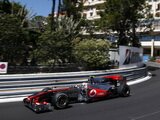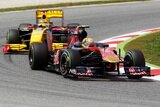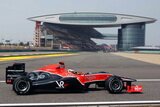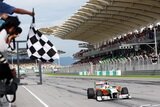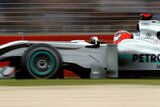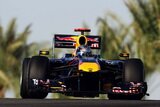In the case of the Sporting Regulations, the primary aims are increased reliability and further cost reductions. In the case of the technical changes, there are three main objectives - reducing the role of aerodynamics in the cars performance; making overtaking easier; and keeping lap times in check...
Tyres
After 10 seasons on grooved tyres, Formula One racing returns to slicks in 2009, as part of moves to increase the emphasis on mechanical rather than aerodynamic grip. With no grooves, grip will increase by around 20 percent, bringing a significant performance gain. However, that gain will be offset by the vastly reduced downforce levels of the revised aerodynamic regulations (see below). The overall effect should be reduced performance through high-speed corners. Drivers will still have the choice of two dry tyre compounds and will still have to use both compounds during a race.
KERS
From 2009 teams have the option of employing a Kinetic Energy Recovery System (KERS) to boost their cars performance. As its name implies, a KERS recovers the (normally wasted) kinetic energy generated by the cars braking process. This energy is stored using a mechanical flywheel or an electrical battery and then made available to the driver, in set amounts per lap, via a ‘boost button on the steering wheel. Under the current regulations the power gain equates to around 80 horsepower, available for just under seven seconds per lap. This could be worth several tenths of a second in terms of lap time, but the weight and packaging of the system - and its impact on the cars weight distribution - also have to be taken into account.
Engines
In a move designed to boost reliability still further, drivers must now use the same engine for three, rather than two, consecutive events. There are also plans for measures to equalise engine performance between teams. How this will be achieved has not yet been finalised.
Aerodynamics
Along with slick tyres, this is the biggest area of change for 2009. Downforce will be dramatically reduced and the cars bodywork will appear much cleaner, thanks to new dimensional regulations that effectively outlaw extraneous items such as barge boards, winglets, turning vanes and chimneys.
As well as reducing overall aero performance, the revisions are also designed to increase overtaking by making the car less susceptible to turbulence when closely following another driver. The most obvious changes are to the front and rear wings.
The front wing becomes lower (75mm from 150mm) and wider (up from 1400 to 1800mm - the same width as the car) with driver-adjustable flaps. Drivers will be allowed to make two wing adjustments per lap, altering the wing angle over a six-degree range.
The rear wing becomes taller (up 150mm to bring it level with the top of the engine cover) and narrower (750mm from 1000mm).
Also at the back of the car, the diffuser has been moved rearwards, its leading edge now level with (rather than ahead of) the rear-wheel axle line. In addition, the diffuser has been made longer and higher, all changes that will reduce its ability to generate downforce.
Testing
2008s testing allowance of 30,000 kilometres is expected to be slashed by a third to 20,000 in a bid to further reduce development costs.
Comments:


